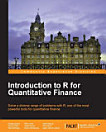Bond Portfolio Optimization
2008年1月 · Lecture Notes in Economics and Mathematical Systems 第 605 冊 · Springer Science & Business Media
電子書
140
頁
report評分和評論未經驗證 瞭解詳情
關於本電子書
1 The tools of modern portfolio theory are in general use in the equity markets, either in the form of portfolio optimization software or as an accepted frame- 2 work in which the asset managers think about stock selection. In the ?xed income market on the other hand, these tools seem irrelevant or inapplicable. Bond portfolios are nowadays mainly managed by a comparison of portfolio 3 4 risk measures vis ¶a vis a benchmark. The portfolio manager’s views about the future evolution of the term structure of interest rates translate th- selves directly into a positioning relative to his benchmark, taking the risks of these deviations from the benchmark into account only in a very crude 5 fashion, i.e. without really quantifying them probabilistically. This is quite surprising since sophisticated models for the evolution of interest rates are commonly used for interest rate derivatives pricing and the derivation of ?xed 6 income risk measures. Wilhelm (1992) explains the absence of modern portfolio tools in the ?xed 7 income markets with two factors: historically relatively stable interest rates and systematic di?erences between stocks and bonds that make an application of modern portfolio theory di–cult. These systematic di?erences relate mainly to the ?xed maturity of bonds. Whereas possible future stock prices become more dispersed as the time horizon widens, the bond price at maturity is 8 ?xed. This implies that the probabilistic models for stocks and bonds have 1 Starting with the seminal work of Markowitz (1952).
為這本電子書評分
歡迎提供意見。
閱讀資訊
智慧型手機與平板電腦
筆記型電腦和電腦
你可以使用電腦的網路瀏覽器聆聽你在 Google Play 購買的有聲書。
電子書閱讀器與其他裝置
如要在 Kobo 電子閱讀器這類電子書裝置上閱覽書籍,必須將檔案下載並傳輸到該裝置上。請按照說明中心的詳細操作說明,將檔案傳輸到支援的電子閱讀器上。







